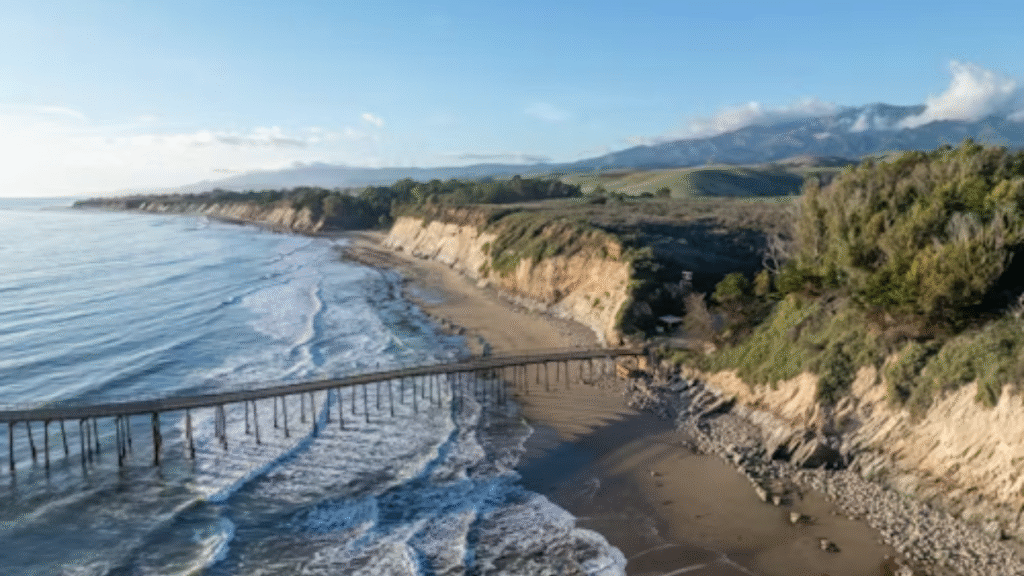In 2025, Cali Laguna has evolved into one of California’s most dynamic and culturally vibrant coastal regions—an intersection where art, sustainability, and innovation meet the sea. Whether you’ve heard of it as a destination, a community, or an emerging identity blending California’s creative ethos with environmental consciousness, Cali Laguna captures the essence of modern West Coast living. This guide explores its roots, culture, economy, architecture, sustainability projects, and what makes it stand apart in the evolving narrative of American coastal cities.
For readers seeking clarity, Cali Laguna represents a broader term used in 2025 to describe the connected urban and cultural zone encompassing Laguna Beach, Laguna Niguel, and surrounding coastal regions of Southern California that have merged economically and environmentally under a unified identity. It is not just a place—it’s a movement toward coastal sustainability, digital creativity, and a reimagined Californian lifestyle.
The Origin and Identity of Cali Laguna
The name “Cali Laguna” blends two powerful identifiers: Cali, shorthand for California’s youthful, progressive energy, and Laguna, representing coastal artistry and serenity. The merging of these terms defines a modern vision of California—one where nature and technology coexist harmoniously.
Initially known for its beaches and art galleries, the broader Laguna region began transforming in the early 2020s. By 2025, city planners, environmentalists, and entrepreneurs began using “Cali Laguna” to represent an integrated coastal corridor—an ecosystem fostering creativity, green living, and inclusive growth.
Today, Cali Laguna stands as a model for how mid-sized American communities can evolve without losing their cultural roots.
A Snapshot of Cali Laguna (2025 Overview)
| Category | Highlights (2025) |
| Population | Approximately 120,000 residents across the greater Cali Laguna region |
| Climate | Mediterranean coastal – mild, sunny, with strong marine influence |
| Major Industries | Tourism, eco-design, art, sustainable technology, ocean research |
| Median Home Price | $1.3 million (reflecting eco-luxury living trend) |
| Main Attractions | Laguna Canyon, Pacific Marine Reserve, The Green Shoreline Project |
| Sustainability Rating | Among top 5 coastal zones in California for environmental innovation |
This new identity has made Cali Laguna a central player in California’s coastal sustainability movement—balancing economic growth with ecological preservation.
The Cultural Pulse of Cali Laguna
Art and creativity are embedded in Cali Laguna’s DNA. The city’s early 20th-century roots as an artists’ colony have evolved into a 21st-century creative hub. In 2025, Cali Laguna hosts year-round exhibitions, immersive art tech festivals, and digital artist residencies blending traditional craftsmanship with augmented reality.
Cali Laguna’s art scene extends beyond galleries—its streets, cliffs, and surf shops are canvases for expression. Sculptures built from reclaimed ocean plastics stand beside murals that reinterpret California’s environmental story.
The cultural ethos of Cali Laguna celebrates connection over consumption—a new kind of luxury rooted in experience, mindfulness, and aesthetics.
The Economy and Innovation Ecosystem
Economically, Cali Laguna has emerged as a case study in sustainable growth. While tourism remains its backbone, the local economy now thrives on innovation, digital entrepreneurship, and eco-engineering.
Key Economic Drivers in 2025
| Sector | Description |
| Tourism 3.0 | Experience-driven travel focusing on wellness, art, and eco-adventure |
| Blue Tech | Marine-based innovation—renewable wave energy, ocean cleanup, aquaculture research |
| Digital Design | Creative agencies and digital nomads relocating to Cali Laguna for work-life balance |
| Green Construction | Eco-homes built with carbon-neutral materials dominate new developments |
| Local Art Economy | Over 500 registered independent artists selling globally via virtual marketplaces |
Cali Laguna’s model blends high-value tourism with community-based sustainability—an economic framework increasingly studied by other coastal regions.
Environmental Leadership and Sustainability Projects
Perhaps the most defining feature of Cali Laguna in 2025 is its environmental leadership. Local policies and public-private partnerships have transformed the area into one of the most progressive green corridors in California.
Flagship Environmental Initiatives
- The Green Shoreline Project – A decade-long restoration initiative to reinforce coastal habitats using biodegradable sea barriers.
- Laguna Solar Corridor – Rooftop solar integration covering 70% of commercial buildings by 2025.
- Blue Carbon Reserve – Protection of underwater meadows that store CO₂ and nurture marine biodiversity.
- Smart Mobility Plan – Introduction of AI-guided electric shuttles connecting beaches and art districts.
- Zero-Plastic Pledge – Businesses collectively pledged to eliminate single-use plastics by 2026.
Cali Laguna’s sustainability framework aligns with California’s Climate Resilience Blueprint but takes it a step further—prioritizing coastal ecosystems as active economic assets rather than vulnerable liabilities.
The Architecture and Urban Aesthetics of Cali Laguna
Architecturally, Cali Laguna embodies what locals call “eco-lux minimalism.” Homes blend natural stone, bamboo composites, and solar glass, often designed to mirror the contours of the coastal cliffs. Rooftop gardens and seawater filtration systems are now standard in most new constructions.
Urban planning emphasizes “walkable blue zones”—compact areas that reduce car dependency while promoting community health. Street lighting powered by solar microgrids and drone-assisted waste collection systems are among the futuristic touches now commonplace.
| Urban Design Feature | Purpose |
| Seawall Gardens | Prevent erosion and double as public spaces |
| Eco-Pass Lanes | Prioritized for electric bikes and low-emission vehicles |
| Oceanview Smart Benches | Solar-powered Wi-Fi and device charging stations |
| Coastal Learning Trails | Guided walking paths educating visitors about marine conservation |
| Community Roof Decks | Shared spaces to promote neighborly connection and reduce isolation |
The built environment reflects a holistic philosophy—architecture that serves people and the planet.
The Lifestyle and Community Spirit
To live in Cali Laguna in 2025 is to embrace balance. Mornings begin with ocean walks, afternoons pulse with coworking and art events, and evenings unfold at seaside cafés lit with bioluminescent lamps. Locals prioritize mindfulness, slow living, and community participation.
Cali Laguna’s residents represent a blend of generations: retirees who value wellness, young professionals seeking hybrid work lifestyles, and long-time locals preserving their heritage. Together, they form a culture rooted in inclusivity and shared ecological stewardship.
The region’s digital infrastructure supports a work-from-anywhere ethos, attracting remote tech workers who integrate seamlessly into local communities—further diversifying its economic base.
Tourism in Cali Laguna: 2025 Trends
Tourism has evolved from mass visitation to “regenerative travel”—a model where travelers contribute to the places they visit.
Top Experiences in Cali Laguna (2025)
- Tidal Meditation Walks: Guided mindfulness sessions during low tide along the Pacific.
- Art-In-Nature Exhibits: Outdoor installations exploring the intersection of technology and ecology.
- Sustainable Surfing Clinics: Boards crafted from algae composites and bamboo.
- Community Reef Restoration Days: Visitors help plant coral in local marine nurseries.
- Culinary Sustainability Tours: Local chefs showcasing ocean-friendly, zero-waste cuisine.
This form of tourism attracts a conscious traveler—someone who values depth, authenticity, and purpose over luxury for its own sake.
The Culinary Scene of Cali Laguna
Cali Laguna’s culinary culture mirrors its broader values: organic, ocean-inspired, and locally sourced. By 2025, the city’s restaurants have redefined coastal Californian cuisine through sustainable seafood, plant-forward dishes, and cultural fusion.
Key Culinary Trends
| Trend | Description |
| Plant-Based Surf Cuisine | Vegan alternatives inspired by ocean flavors—seaweed tacos, tofu poke, kelp ceviche |
| Local Ocean Harvest | Menus feature seasonal, ethically caught seafood only |
| Zero-Waste Dining | Kitchens using AI to track and eliminate food waste |
| Coastal Coffee Culture | Small-batch brewers using reclaimed ocean water filtration |
| Artisanal Fermentation | Local kombucha and miso brewers reflecting the region’s creative ethos |
Each restaurant operates as both eatery and educational platform—inviting diners to experience sustainability as a sensory journey.
Education, Research, and Technology
Cali Laguna’s educational institutions have integrated ocean research, climate studies, and sustainable design as core curricula. The Laguna Center for Marine Innovation (LCMI) partners with universities to develop ocean-safe materials, while high schools teach environmental design alongside digital literacy.
Emerging startups have made the area a magnet for “blue tech”—companies that leverage marine data for renewable energy and coastal management. AI-driven ocean sensors now map coral health in real time, creating data accessible to the public through interactive art displays.
Transportation and Infrastructure
The transportation model in Cali Laguna reflects forward-thinking efficiency. With a focus on low-emission systems, the city’s smart mobility grid interlinks beaches, art districts, and residential zones via electric shuttles, solar-powered e-bikes, and pedestrian skywalks.
| Transportation Type | Status (2025) | Description |
| Solar E-Shuttles | Fully operational | Serve high-traffic tourist areas |
| Oceanview Tram | Under expansion | Connects Laguna Beach to inland transit |
| Autonomous Buses | Pilot phase | AI-managed routes optimizing for crowd density |
| EV Charging Network | 100+ stations | Solar-fed, accessible citywide |
| Drone Logistics | Limited commercial use | Delivers eco-goods and fresh produce |
This transportation evolution has reduced local emissions by nearly 40% since 2020, setting a precedent for sustainable coastal mobility.
Economy Meets Ecology: The “Blue-Green Balance”
Cali Laguna has coined its own urban philosophy: the Blue-Green Balance—a framework integrating ocean conservation (blue economy) with terrestrial sustainability (green innovation). This model ensures that growth in one area supports the other.
Examples include building codes requiring seawater recycling systems in new developments and green business certifications for companies that offset their carbon through ocean restoration projects.
The Social Dynamics of Cali Laguna
Cali Laguna’s community is marked by a rare blend of cosmopolitan diversity and small-town cohesion. Public art nights, clean-up drives, and open-mic storytelling events foster a participatory civic culture. Unlike many resort towns, it has resisted over-commercialization through strict zoning laws and community-driven urban planning.
The region’s inclusivity extends to its housing programs: mixed-income eco-living complexes encourage social diversity, preventing the gentrification that once threatened the original Laguna Beach identity.
The Future Vision: 2030 and Beyond
Looking forward, Cali Laguna aims to become California’s first zero-emission coastal region by 2030. This ambitious goal encompasses expanded marine conservation zones, self-sustaining water systems, and carbon-negative architecture.
Local policymakers are exploring “sea-to-city” design principles—turning ocean data into real-time decision tools for flood control, tourism flow, and biodiversity monitoring. Art, science, and policy now coalesce in shaping a smarter, more resilient coastline.Cali Laguna in 2025: The Future of Art, Ecology, and Coastal Living in California
Frequently Asked Questions (FAQs)
1. What exactly is Cali Laguna?
Cali Laguna refers to the evolving cultural and environmental zone in Southern California that integrates Laguna Beach, Laguna Niguel, and nearby coastal areas under a unified identity emphasizing sustainability, art, and innovation.
2. Why has Cali Laguna gained importance in 2025?
It represents a new model for sustainable urban living, balancing ecological protection, cultural vitality, and digital innovation—making it a benchmark for other cities.
3. Is Cali Laguna a tourist destination or a residential area?
It’s both. Tourists come for its eco-luxury experiences, while residents enjoy a high quality of life rooted in wellness, creativity, and community.
4. How does Cali Laguna contribute to environmental conservation?
Through initiatives like The Green Shoreline Project, zero-plastic policies, and marine habitat restoration programs, the region actively restores and protects coastal ecosystems.
5. What makes Cali Laguna unique compared to other California coastal cities?
Its fusion of art, sustainability, and smart urban planning—where every project, from architecture to food, contributes to a larger environmental and cultural mission.
Conclusion
Cali Laguna in 2025 stands as a microcosm of the future—where coastal living meets ecological wisdom and creative renaissance. It’s not just a destination but an ideology of balance: between ocean and land, tradition and innovation, art and science. As the world looks toward sustainable cities, Cali Laguna offers a living example of how humanity can evolve gracefully—rooted in the past, yet boldly stepping toward the future.







